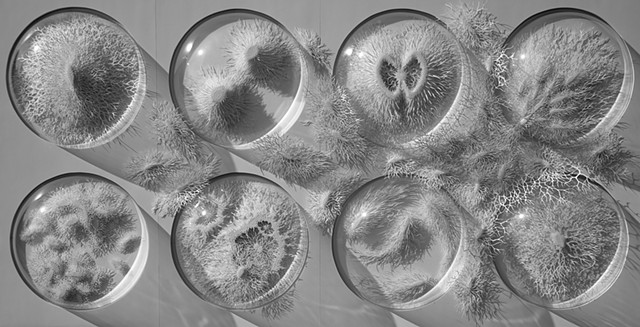"To see a World in a Grain of Sand"
(William Blake)
My work comes into being in the space where science fact and science fiction meet and merge.
Inspired by the narratives of scientific discovery and innovation that increasingly dominate contemporary culture my work is an attempt by a non-scientist, an outsider, to visualize, comprehend and assimilate these new ideas and new ways of seeing the world, whether it involves our changing perception of bacteria or the paradigm shifts in our comprehension of the physical world that emerge from quantum physics.
My choice of paper cutting as a vehicle for this exploration of our changing perception of nature is based on its accessibility and simplicity as a medium. The transformation of a banal, quotidian material into something visually extraordinary parallels and echoes the radical changes in our vision of the familiar world that science engenders.
A recurrent theme in my work is the limitations of science when confronted by the vast scale and complexity of nature. Science's goal of containing and defining nature is constantly subverted and fractured by the sheer volume and variety of data that needs to be observed, analysed and classified. This is figured in the excessive detail that characterizes my work as I attempt to overwhelm the eye through the scale and volume of what I depict.
Process and material are crucial; the large hand cut pieces are dissected from sheet after sheet of paper in careful scientific fashion with a scalpel knife, sometimes taking months to complete, the slow act of cutting repeating the long time-based processes that dominate nature: growth, decay and re-growth; whereas the laser cut works push both machine and material to their limits.
Paper, my chosen material, embodies the paradoxical qualities that we see in nature: its fragility and durability, its strength and delicacy; there is a pleasing poetic symmetry in taking this material that was cut from the forest and by cutting and transforming it once again returning it to its origins.
